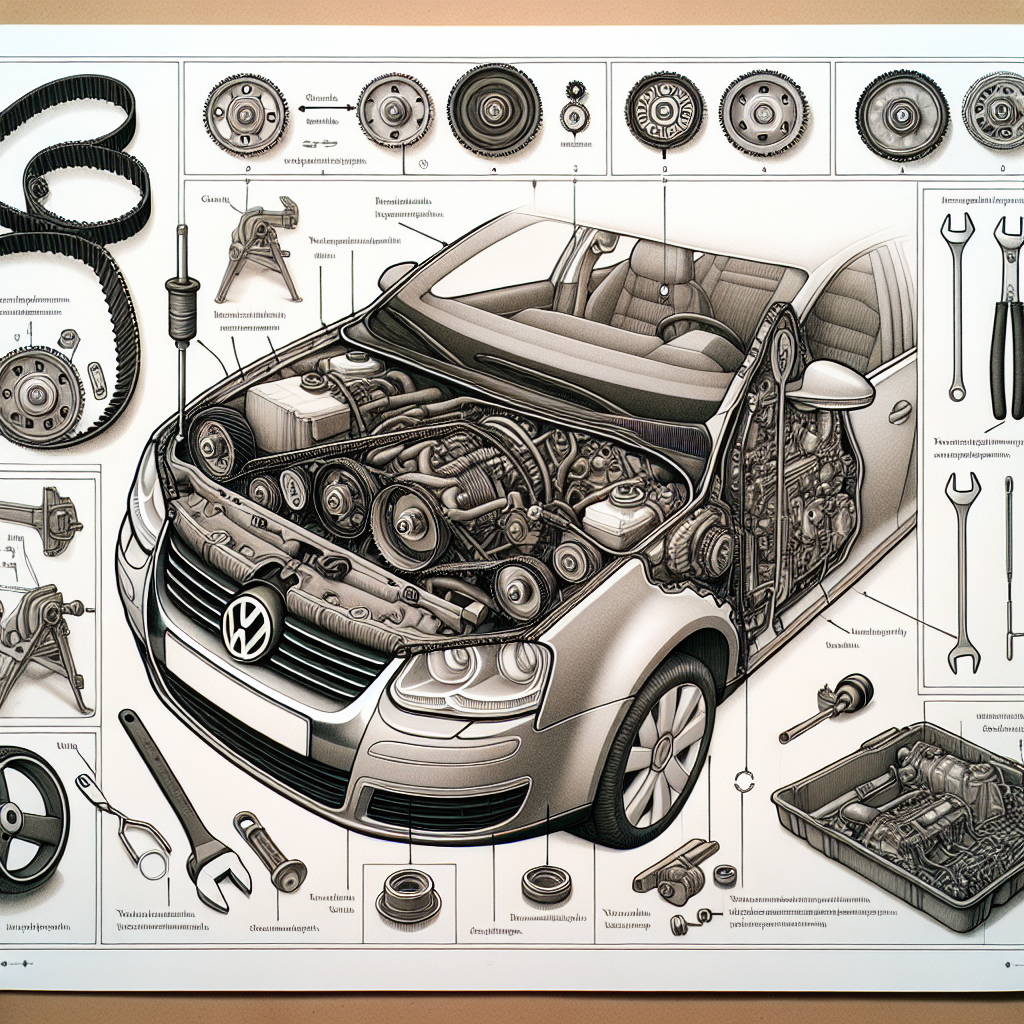
Replacing the timing belt in your 2012 Volkswagen Jetta with a 2.5L Inline-5 engine is a critical maintenance task that ensures your vehicle runs smoothly and avoids catastrophic engine damage. Follow this detailed guide to replace your timing belt accurately and efficiently.
Tools Required
- Torque wrench
- Socket set
- Timing belt tension gauge
Replacement Steps
1. Ensure Safety First
- Disconnect the negative battery terminal to prevent any electrical accidents.
2. Access the Timing Belt
- Remove the engine cover, air intake, and throttle body to gain access.
- Support the engine from underneath using a jack or engine support bar.
- Remove the right side engine mount to create sufficient working space.
3. Align Timing Marks
- Align the timing marks on the camshaft and crankshaft to the "Top Dead Center" (TDC) position. Accurate alignment is crucial to avoid engine damage.
4. Remove the Old Timing Belt
- Loosen the timing belt tensioner.
- Carefully remove the old timing belt, ensuring you do not disturb the alignment of the camshaft and crankshaft.
5. Install the New Timing Belt
- Carefully install the new timing belt, making sure it aligns perfectly with the timing marks.
- Tighten the timing belt tensioner.
6. Verify Alignment
- Rotate the engine two full turns by hand to ensure the new belt is correctly aligned and there are no obstructions.
7. Reassemble Components
- Reinstall the engine mount, throttle body, air intake, and engine cover.
8. Reconnect Battery and Start Engine
- Reconnect the negative battery terminal.
- Start the engine and listen for any unusual noises, ensuring it runs smoothly.
9. Perform Final Checks
- Conduct a thorough inspection to ensure all components are secure and everything is in place.
Recommended Maintenance Schedule
- Replace the timing belt every 80,000 miles to ensure optimal performance and prevent potential engine damage.
Expert Tips and Common Mistakes to Avoid
- Refer to the manual: Always follow the manufacturer's recommended procedures and torque specifications for the specific model and year.
- Double-check timing marks: Before starting, ensure the engine is at TDC to avoid serious engine damage.
- Use quality parts: Invest in high-quality replacement timing belts and components; don't compromise on cost.
- Proper tensioning: Pay close attention to the timing belt tension. Over-tensioning can lead to premature wear, while under-tensioning can cause slippage and damage.
- Replace related components: Consider replacing other components such as the water pump, tensioner, and idler pulleys while the timing belt is off to save on future labor costs.
- Thorough inspection: Always double-check your work post-installation to avoid doing the job twice.
Frequently Asked Questions
Q1. Why is it important to replace the timing belt?
The timing belt synchronizes the camshaft and crankshaft rotations, ensuring the engine's valves open and close at the right times. A worn or broken timing belt can lead to severe engine damage.
Q2. Can I replace the timing belt myself?
Yes, if you have the right tools and follow the detailed guide carefully. However, if you're not confident in your mechanical skills, it’s best to consult a professional mechanic.
Q3. What happens if the timing belt breaks while driving?
If the timing belt breaks while driving, it can cause significant engine damage, as the pistons and valves will collide. This can lead to costly repairs or the need for a complete engine replacement.
Q4. How can I tell if my timing belt needs replacement?
Signs of a worn timing belt include unusual noises from the engine, difficulties starting the car, or the engine misfiring. If you notice any of these symptoms, check your timing belt immediately.

